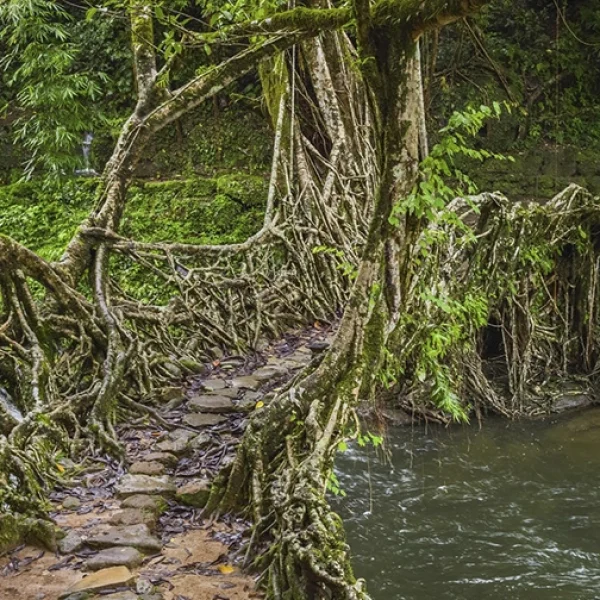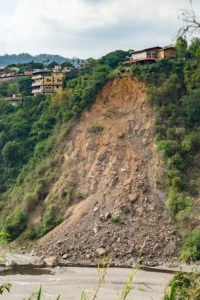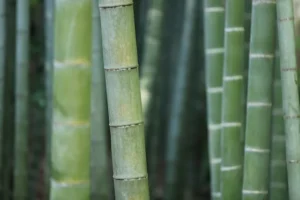Nestled amidst the lush green hills of Meghalaya, India, lies a marvel of nature and human ingenuity: the living root bridges. These extraordinary structures, crafted over centuries by the indigenous Khasi and Jaintia tribes, are a testament to their deep-rooted connection with the environment. With their inclusion on the tentative UNESCO World Heritage Site list, these bridges have garnered global attention, captivating the hearts of nature enthusiasts and explorers alike.
The Enigma of Living Root Bridges
How is it possible that bridges can grow from the earth? The answer lies in the ingenious techniques employed by the local tribes. By carefully guiding the aerial roots of rubber fig trees (Ficus elastica) over bamboo scaffolds, they cultivate living, breathing bridges that become stronger and more resilient with time. These bridges are not merely pathways; they are intricate ecosystems that support biodiversity, providing homes for various flora and fauna.
A Symphony of Nature and Human Effort
The construction of a living root bridge is a multi-generational endeavor, requiring patience, skill, and a deep understanding of the forest’s dynamics. The community plays a vital role in nurturing these bridges, ensuring their longevity and sustainability. It’s a testament to the harmonious coexistence of humans and nature, a philosophy deeply ingrained in the culture of Meghalaya.
Beyond Aesthetics: The Ecological Significance
While the living root bridges are undoubtedly breathtaking, their ecological importance cannot be overstated. These bridges serve as corridors for wildlife, facilitating movement through the dense forests. They also contribute to soil conservation, preventing erosion and preserving the delicate ecosystem. Moreover, the bridges play a crucial role in maintaining water quality by filtering pollutants and regulating water flow.

A Cultural Tapestry
The living root bridges are more than just engineering marvels; they are an integral part of the local culture. The Khasi and Jaintia tribes have a profound reverence for nature, and the bridges symbolize their harmonious relationship with the environment. The construction and maintenance of these bridges are often accompanied by traditional rituals and ceremonies, reinforcing their cultural significance.
Tourism and Conservation
The growing popularity of living root bridges has led to an influx of tourists, eager to witness this natural wonder firsthand. While tourism can generate economic benefits for the local community, it’s essential to manage it sustainably to protect the bridges and their surroundings. Responsible tourism practices, such as guided tours, eco-lodges, and community-based initiatives, can help ensure the long-term preservation of these precious ecosystems.
Challenges and Opportunities
Despite their resilience, living root bridges face challenges such as climate change, deforestation, and increased foot traffic. It is imperative to develop comprehensive conservation plans to address these threats and safeguard the future of these iconic structures. Collaboration between government agencies, local communities, and environmental organizations is crucial for the successful implementation of conservation efforts.
Conclusion
The living root bridges of Meghalaya stand as a testament to the ingenuity of the human spirit and the power of nature. These remarkable structures are not only architectural marvels but also vital components of the region’s biodiversity and cultural heritage. As we marvel at their beauty, let us also commit to preserving these precious ecosystems for generations to come.





